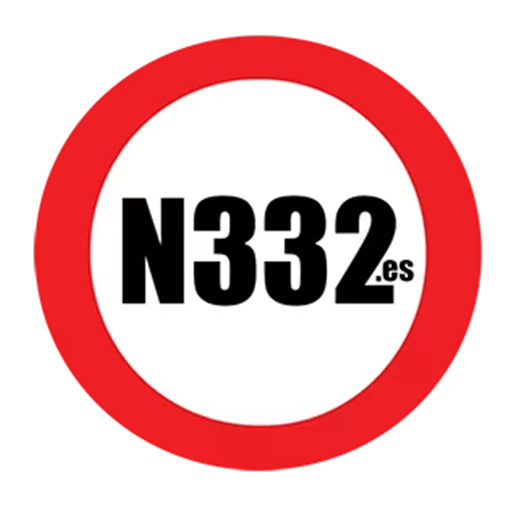Driving a vehicle transporting dangerous goods requires a special permit which ensures that drivers of those vehicles have undergone sufficient training to handle their load, and how to deal with situations should they occur.
It is also useful for other drivers to be aware of the type of load being transported, in case of an emergency.
The origin of the term ADR comes from the first letter of some key words in the French title: Accord Européen relatif au Transport International des Marchandises Dangereuses par Route. For this reason, these authorisations are colloquially called “ADR permits.”
The European Agreement on the international transport of dangerous goods by road (ADR) has its origins in the Second World War, in Geneva in 1957, under the United Nations.
Dangerous goods are those materials and objects whose transport by road is prohibited or authorised exclusively under the conditions established in the European ADR Agreement or in other specific provisions and which require a specific permit to transport them.
Dangerous goods, regardless of the means of transport, are organised into different classes depending on the danger that their transport may pose. There are 9 general classes and 13 specific classes:
Contents
Class 1: Dangerous materials and objects

Explosive materials: solid or liquid or mixture of materials that, by chemical reaction, can release gases at a temperature, pressure and speed such that they can cause damage to their environment.
Pyrotechnic materials: materials or mixtures intended to produce a heating, luminous, sound, gaseous or smoke effect or a combination of such effects as a consequence of self-sustained exothermic or detonating chemical reactions.
Explosive objects: containing one or more explosive materials and/or pyrotechnic materials.
Materials or objects not mentioned above manufactured for the purpose of producing a practical effect by explosion or for pyrotechnic purposes.
Class 2: Gases

Gas is understood as a matter that at 50º C has a pressure greater than 3 bar or at 20º C at normal pressure is in a gaseous state.
It includes pure gases or mixtures of gases and objects containing such materials in their various forms of treatment for handling (tablets, liquefied, dissolved, refrigerated), aerosol generators.
Ex. Butane, oxygen, nitrogen, etc.
Class 3: Flammable liquids

They are liquids that, due to the effect of heat or a flame, can burn their vapours.
This class also includes solid materials in a molten state whose flash point is greater than 60º C and transported while hot at a temperature equal to or greater than its flash point.
E.g. Petrol, diesel, alcohol, paints, solvents, etc.
Class 4

Class 4.1: Solid flammable materials, self-reactive materials and solid desensitised explosive materials:
Materials capable of being ignited by the effect of a spark, rubbing, self-reactive or explosive materials with explosive properties neutralised (by water, alcohol, plasticiser, etc.).
Ex. Waste rubber, phosphorus, cellulose, etc.
Class 4.2: Materials that can undergo spontaneous inflammation:
They are materials that can spontaneously burn in contact with air in a short period of time (pyrophoric) and others require long periods and a large amount of matter to ignite (materials susceptible to self-heating).
Eg Powdered charcoal, unstabilised fish meal, wet cotton, white phosphorus, etc.
Class 4.3: Materials that give off flammable gases when in contact with water:
Various types of materials that release flammable gases when they come into contact with water.
Ex: Barium, sodium, potassium, etc.
Class 5

Class 5.1: Oxidizing materials:
They are materials that react by releasing oxygen and cause or promote the combustion of other materials and the objects that contain them, without necessarily being combustible themselves.
Eg. Nitrates, hydrogen peroxide (hydrogen peroxide) with more than 60% oxygen, etc.
Class 5.2: Organic peroxide materials:
They are materials that have the property of being oxidizing, combustible and also very unstable (they decompose easily at room temperature) so they are usually transported with temperature regulation.
E.g. Benzolium peroxide, butolyum peroxide, etc.
Class 6

Class 6.1: Toxic Materials:
It includes materials that in small quantities can harm human health or cause death through inhalation, skin absorption or ingestion.
Eg. Cyanide, various pesticides, etc.
Class 6.2: Infectious materials:
They are materials that have pathogenic agents that cause diseases in animals or humans.
Ex. Clinical waste.
Class 7: Radioactive materials

They are materials that give off radiation or particles capable of causing damage to cells.
For example, uranium, plutonium, nuclear radiation emitters, etc.
Class 8: Corrosive materials

They are materials that, due to a chemical reaction, damage the skin and mucous membranes when they come into contact with them or that can cause damage to other merchandise, means of transport or cause other dangers.
Ex. Sulfuric acid, nitric acid, acid electrolyte accumulators, etc.
Class 9: Miscellaneous dangerous substances and objects

All materials and objects that, during transport, pose a different danger than that contemplated by the other classes are included.
For example, asbestos, castor flour, self-inflating rescue devices, lithium batteries, first aid kits, materials hazardous to the environment, etc.
Discover more from N332.es - Driving In Spain
Subscribe to get the latest posts sent to your email.

You must be logged in to post a comment.